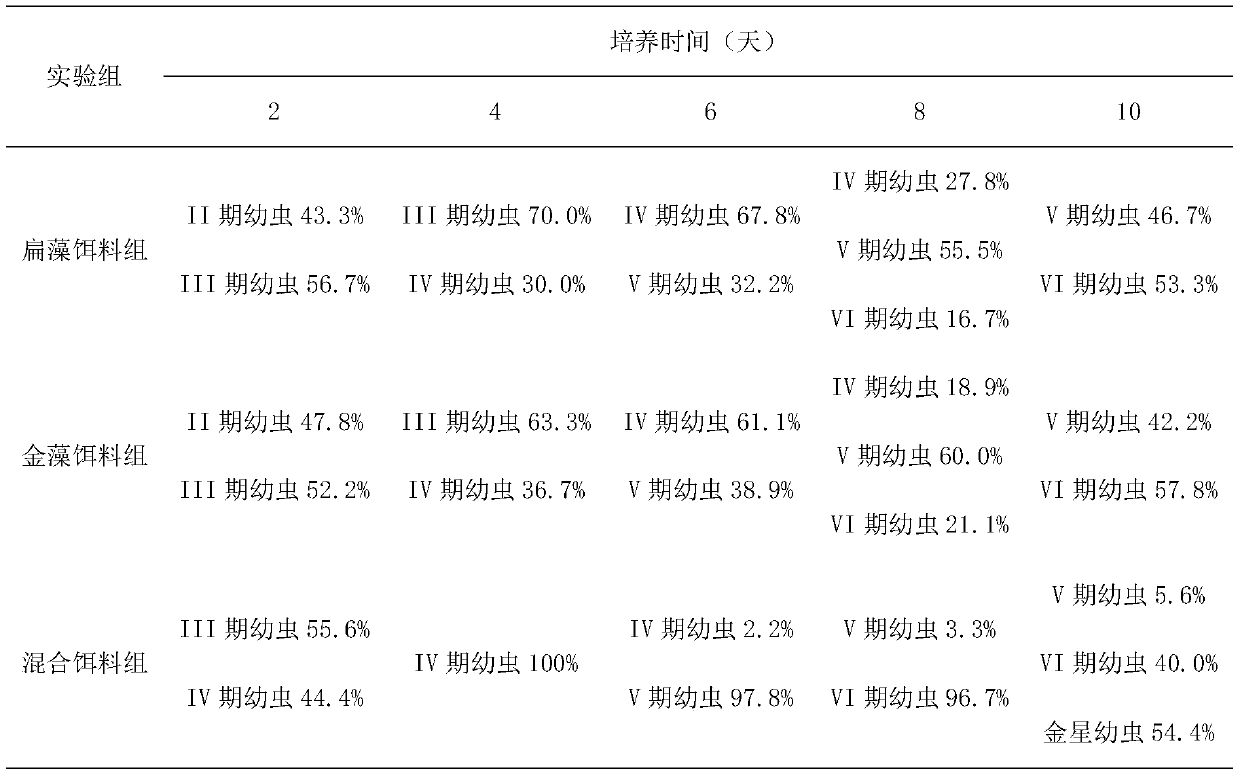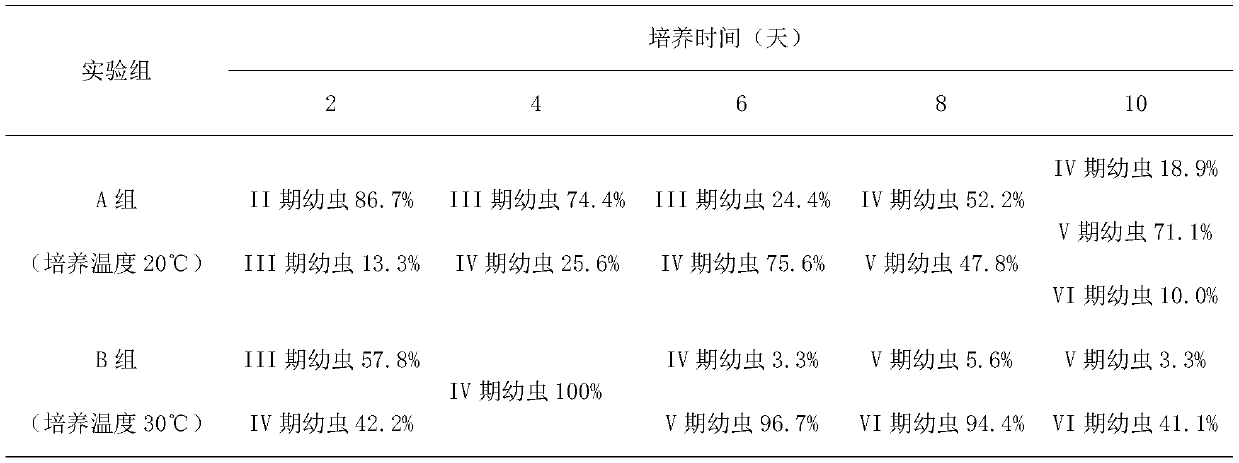A Simple and Quick Method for Cultivating Barnacle Larvae
A simple and convenient technique for barnacle larvae, which is applied in the field of quick and easy cultivation of barnacle larvae, can solve problems that have not been seen, and achieve the effects of increasing development speed, broad application prospects, and shortening the cultivation time
- Summary
- Abstract
- Description
- Claims
- Application Information
AI Technical Summary
Problems solved by technology
Method used
Image
Examples
Embodiment 1
[0028] The utensils used for the cultivation of barnacle larvae are cleaned, high-temperature sterilized and dried; the seawater needs to be treated by sand filtration, boiling and disinfection, and then cooled to room temperature for later use.
[0029] The mature individuals of the barnacles Linia chinensis were collected from the reefs along the coast of Daya Bay. During the collection process, try to select individuals that are larger and intact in appearance. Adult barnacles were dissected, and brown mature fertilized eggs were collected, put into a 200mL transparent sample bottle filled with 150mL filtered and sterilized seawater, brought back to the laboratory, and allowed to stand overnight at room temperature (about 24-26°C). After a large number of egg masses hatch, collect lively and robust nauplii and culture them according to the following steps:
[0030] (1) Use a 1000mL glass beaker as a culture container, add an appropriate amount of filtered and sterilized sea...
Embodiment 2
[0038] The utensils used for the cultivation of barnacle larvae are cleaned, high-temperature sterilized and dried; the seawater needs to be treated by sand filtration, boiling and disinfection, and then cooled to room temperature for later use.
[0039] The mature individuals of the barnacles Linia chinensis were collected from the reefs along the coast of Daya Bay. During the collection process, try to select individuals that are larger and intact in appearance. Adult barnacles were dissected, and brown mature fertilized eggs were collected, put into a 200mL transparent sample bottle filled with 150mL filtered and sterilized seawater and brought back to the laboratory. After a large number of larvae hatch, collect lively and robust individuals and cultivate them according to the following steps:
[0040] (1) Use a 1000mL glass beaker as a culture container, add an appropriate amount of filtered and sterilized seawater and bait (about 1000mL) into the beaker, transfer lively ...
Embodiment 3
[0049] The utensils used for the cultivation of barnacle larvae are cleaned, high-temperature sterilized and dried; the seawater needs to be treated by sand filtration, boiling and disinfection, and then cooled to room temperature for later use.
[0050] The mature individuals of the barnacles Linia chinensis were collected from the reefs along the coast of Daya Bay. During the collection process, try to select individuals that are larger and intact in appearance. Adult barnacles were dissected, and brown mature fertilized eggs were collected, put into a 200mL transparent sample bottle filled with 150mL filtered and sterilized seawater and brought back to the laboratory. After a large number of larvae hatch, collect lively and robust individuals and cultivate them according to the following steps:
[0051] (1) Use a 1000mL glass beaker as a culture container, add an appropriate amount of filtered and sterilized seawater and bait (about 1000mL) into the beaker, transfer lively ...
PUM
 Login to View More
Login to View More Abstract
Description
Claims
Application Information
 Login to View More
Login to View More - R&D
- Intellectual Property
- Life Sciences
- Materials
- Tech Scout
- Unparalleled Data Quality
- Higher Quality Content
- 60% Fewer Hallucinations
Browse by: Latest US Patents, China's latest patents, Technical Efficacy Thesaurus, Application Domain, Technology Topic, Popular Technical Reports.
© 2025 PatSnap. All rights reserved.Legal|Privacy policy|Modern Slavery Act Transparency Statement|Sitemap|About US| Contact US: help@patsnap.com



